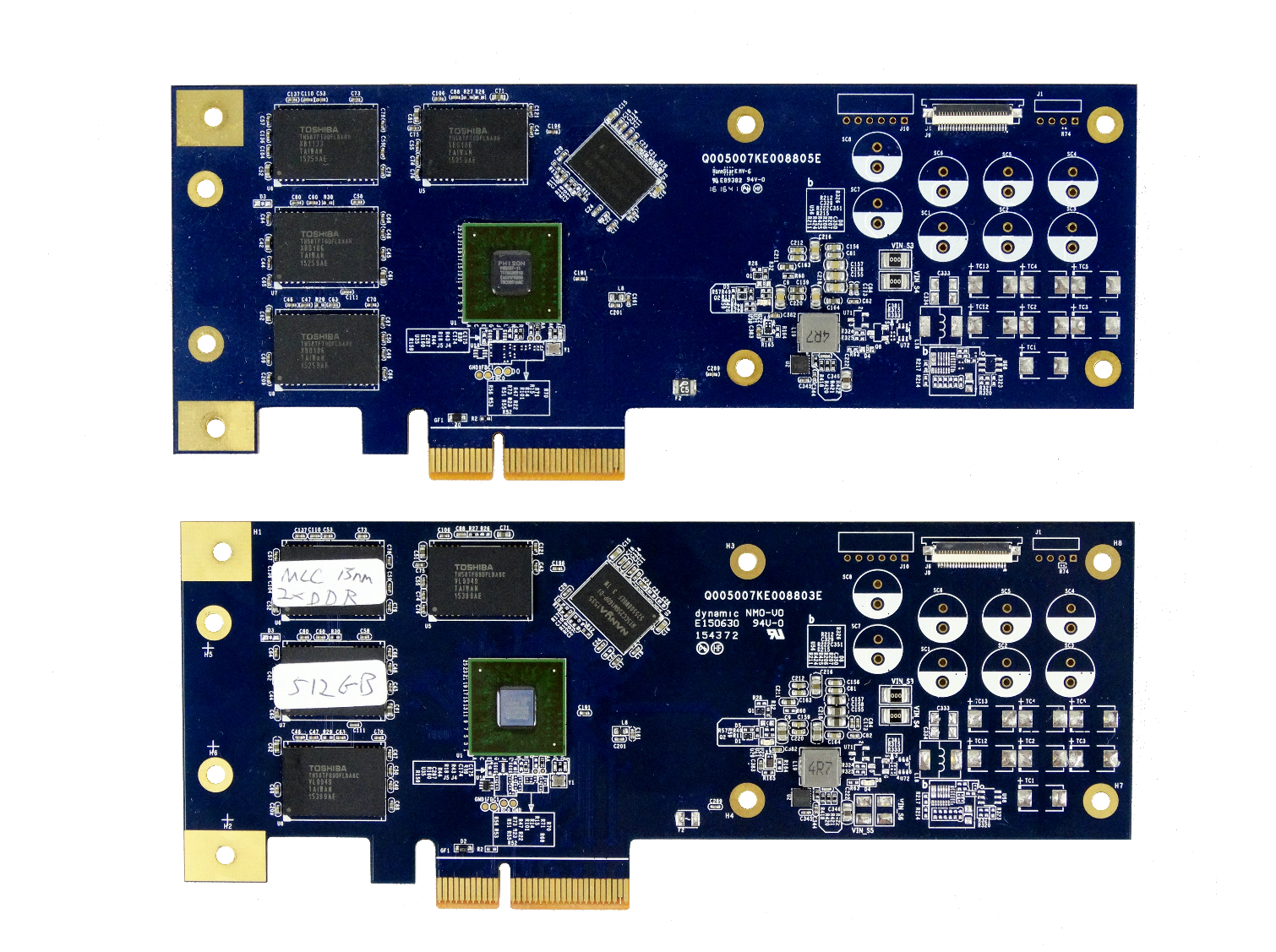The Ultimate Phison E7 Prototype NVMe SSDs
Conclusion
The article today wasn't meant to be a heavy review with a lot of the critical performance or pricing discussions we normally use to judge a product. Neither drive is officially a product, yet, and neither uses production firmware. It wouldn't be fair to judge the reference designs by the same standards we use for products sold in an open market.
Over the years, we've tested several products like the two prototype reference designs on display. From experience, I can tell you that most rarely survive the full test suite without failing for one reason or another. The two Phison cards survived without any issues. It's also rare for us to take early prototype reference design products like this and write about them in this early form. We work with almost all of the controller designers to test hardware, firmware, and features, but many of those results stay hidden until retail products come to market. The testing allows us to see what's in the pipeline. We get to see new trends, like extreme over-provisioning, and new flash, like BiCS, well before the retail announcement. We like testing the hardware in advance because it allows us to experiment and find strengths and weaknesses in advance. Some of the retail products arrive for a review with a set date before an NDA release, so our time with the products is often very short. We're always grateful for the opportunity to test products in advance, and even more so when we get to share the results with the public.
The prototypes we tested use older firmware. We received our samples after the Zotac SONIX review, but well before the Patriot Hellfire M.2, MyDigitalSSD BPX and Corsair Force Series MP500. The three latter drives have superior firmware compared to our reference samples. We didn't request a new firmware from Phison because the drives are still in the prototype stage. Phison’s firmware team is busy churning out new PS5008-E8 and E8T NVMe products that will lower costs and compete as true entry-level NVMe SSDs.
Of the two products we tested, only the double-DDR has a realistic chance of coming to a retail consumer market. We should see this design in early 2017, and it will make a nice platform for companies to use for premium-tier NVMe SSD products. As we mentioned in the introduction, Patriot has a similar double-DDR product on the roadmap, or at least they did last September. The drive didn't appear at CES this year, but the product manager didn't come to the trade show, either.
The drive I call The Ultimate E7 SLC could make an appearance in 2017, but that is unlikely to happen as a consumer model. If it did appear, the drive would likely be a limited-edition model, or Phison could use it to target a specific market segment. The trend is for companies to manufacture general-use SSDs that appeal to a wide audience. The tooling costs to make a special heatsink, along with product naming, legal, and the other unseen aspects, would be prohibitive for a limited-run NVMe SSD. The cost of flash right now doesn't help, either. We will keep our fingers crossed but won't hold our breath.
MORE: Best SSDs
MORE: How We Test HDDs And SSDs
Get Tom's Hardware's best news and in-depth reviews, straight to your inbox.
MORE: All SSD Content

Chris Ramseyer was a senior contributing editor for Tom's Hardware. He tested and reviewed consumer storage.
-
kalmquist If it were purely a matter of cost of materials, one might expect a 240 GB SLC drive to cost the same as a 480 GB MLC drive. That would probably get some customers looking to combine a fast boot drive with a slower drive for mass storage, but not necessarily enough to cover the engineering and validation costs.Reply -
jchang6 An SLC device priced the same as 2X capacity MLC would definitely be interesting, more so if it could be programmed by the userReply -
drajitsh It is speculated that Samsung Z-nand could be 3d-SLC. With a large memory buffer (with power loss caps, of course), a specially made for SLC controller, and a SLC specific firmware it could challenge intel x point.Reply -
lsorense Using the flash in pseudo SLC mode does not mean ignoring half the flash. It also does not mean using twice as many cells to store things. What it does mean is that instead of storing 2 bits per cell as MLC does, you store 1 bit instead, by not using the two middle voltage levels. So if MLC mode stored 00, 01, 10, and 11 using the voltages 0, 0.5, 1.0 and 1.5 (I am sure these are not the right ones, but it's the idea), pseudo SLC mode would just store 0 and 1 using 0 and 1.5 volt. This has the advantage for reliability that you can treat any cell with a value of between 0 and 0.6 as a 0 and any value between 0.9 and 1.5V as a 1, which is much more tolerant of cell wear than MLC mode where you have to be more in the range of 0 to 0.2V, 0.4 to 0.7V, etc. Since it has much more tolerance, it can stay working much longer than in MLC mode. Whether using it in pseudo SLC mode makes it any faster than MLC I don't know. I don't actually see why it should, but perhaps reading and writing the middle voltage levels is slower than just the top and bottom.Reply
